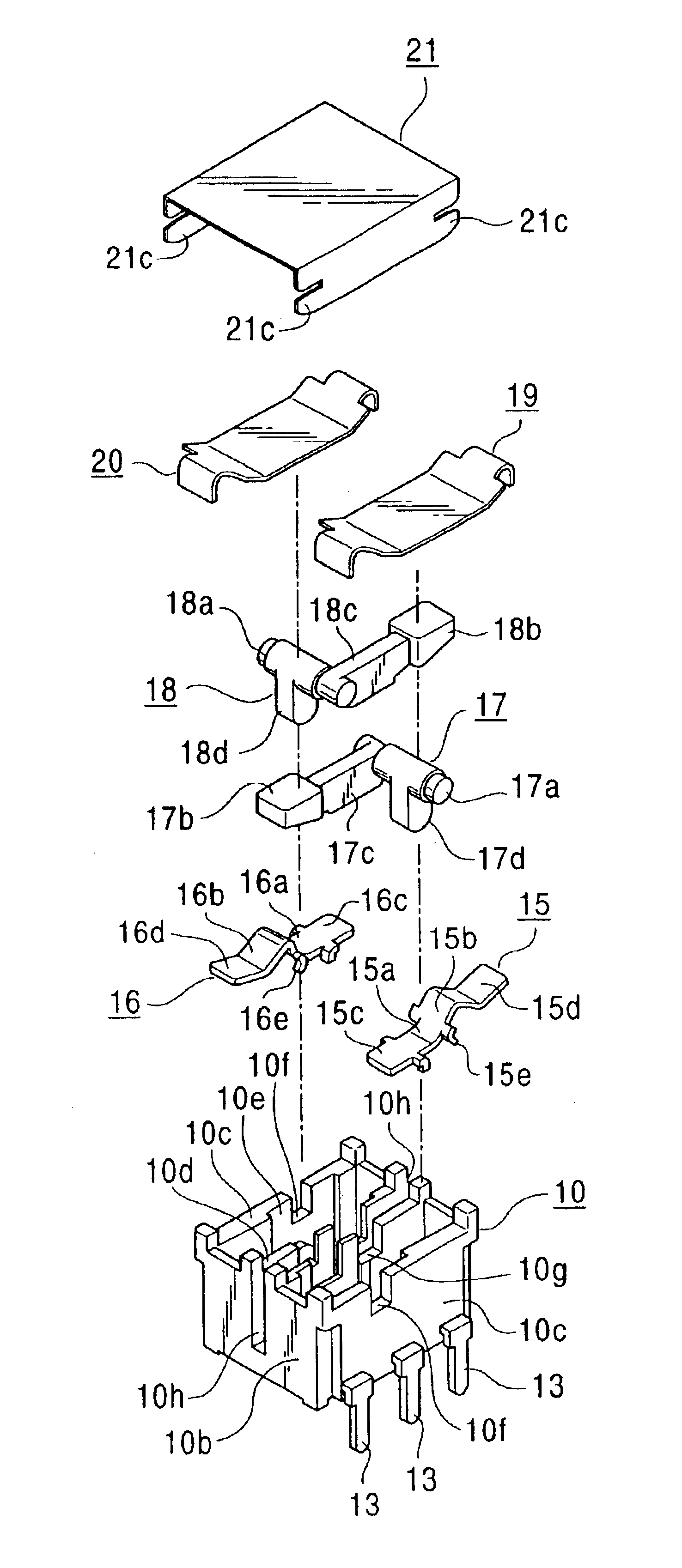Switching device
a switching device and drive body technology, applied in the direction of switches with two operating positions, electrical equipment, tumbler/rocker switch details, etc., can solve the problems of complicated structure, difficult assembly of the switching device, and large size of the overall switching device, so as to achieve convenient assembly, simple structure, and easy assembly.
- Summary
- Abstract
- Description
- Claims
- Application Information
AI Technical Summary
Benefits of technology
Problems solved by technology
Method used
Image
Examples
Embodiment Construction
A preferred embodiment of the present invention will be described with reference to the accompanying drawings. FIG. 1 is an exploded perspective view of a switching device according to the embodiment of the present invention. FIG. 2 is a perspective view of the switching device. FIG. 3 is a plan view of the switching device in which a cover and a leaf spring are omitted. FIG. 4 is a plan view of a casing used for the switching device. FIG. 5 illustrates a non-operational state of the switching device. FIGS. 6 and 7 illustrate the states in which a conductive plate is turned and a push switch is actuated, respectively, by operating the switching device. FIG. 8 is a plan view of the switching device. FIGS. 9 and 10 are side views of the switching device viewed from its long side and short side, respectively. FIG. 11 is a bottom view of the switching device.
The switching device illustrated in these figures is used as a drive switch of a car-mounted automatic window apparatus and is a d...
PUM
 Login to View More
Login to View More Abstract
Description
Claims
Application Information
 Login to View More
Login to View More - R&D
- Intellectual Property
- Life Sciences
- Materials
- Tech Scout
- Unparalleled Data Quality
- Higher Quality Content
- 60% Fewer Hallucinations
Browse by: Latest US Patents, China's latest patents, Technical Efficacy Thesaurus, Application Domain, Technology Topic, Popular Technical Reports.
© 2025 PatSnap. All rights reserved.Legal|Privacy policy|Modern Slavery Act Transparency Statement|Sitemap|About US| Contact US: help@patsnap.com



